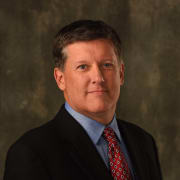After the Crash: One Year After Accident Nearly Took His Life, Tiger Woods' Future Remains Uncertain
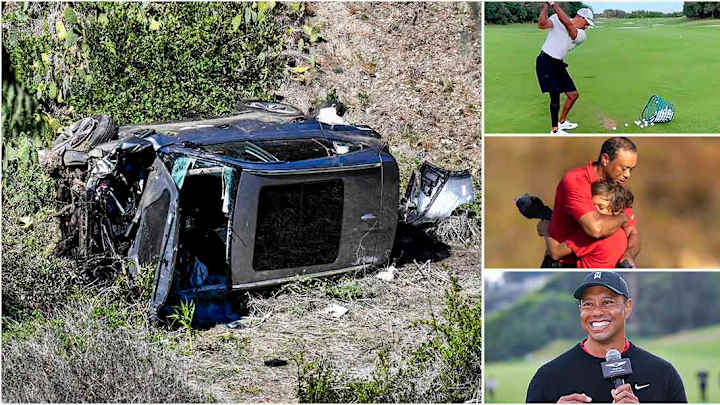
Justin Thomas enjoys the abuse that comes his way from Tiger Woods, most of it good-natured, nearly all of it with a sharp edge. Despite the 18-year age difference, the two are close and have been since Woods began to embrace the younger generation of golf stars that regularly showed up in his absence.
That’s why last week's Genesis Invitational was both somber and celebratory for Thomas. It was a reminder of the horrific car crash that could have taken Woods’ life and the notable recovery he has made to this point.
Woods was all smiles at Riviera Country Club, where his TGR Foundation runs the tournament and he is the host. And despite the long recovery that figures to keep him from competing for some unknown period of time, the 15-time major champion looked and sounded good – a stark contrast from a year earlier.
Truth is, last year Woods was still struggling after his fifth back surgery as he arrived at the Genesis on Friday, Feb. 19, to take part in his duties as host. Normally, he would have been on site at the beginning of the week, which was a telling sign. Throw in his reluctance to do any media interviews other than a booth appearance with CBS’ Jim Nantz and it was clear he did not want to talk about his health issues.
But Woods still possessed his keen wit and he used it on Thomas, suggesting via text message that Friday afternoon that perhaps they might meet for dinner – knowing full well that Thomas, steaming, had missed the 36-hole cut and was already on his way out of town.
“He does so much crap like that to me,’’ said Thomas, unable to keep track of all the various times that Woods has needled him.
But this one hit home.
It was among the last times they communicated before the horrific events of Feb. 23, when Woods – on his way to filming at Rolling Hills Country Country Club – was involved in the one-vehicle crash that made worldwide headlines.
“I can’t believe it’s been a year,’’ Thomas said last week at Riviera. “It feels like it’s been longer than that. So, it’s great seeing him here. I know he loves it, catching up with all of us and all the other guys. Yeah, anytime you get to have him around, especially with all he’s been through the last year, it’s definitely great for everybody.’’
Woods was meeting and greeting a year ago, too, but many noted he did not look well. He was still moving around cautiously, even though his latest back procedure had been performed just prior to Christmas. He appeared bloated, and many of his answers were evasive when he conducted his interview on the CBS broadcast with Nantz.
Nobody knew if Woods would be ready in time for the Masters last April, and when Nantz asked if he would make it to that Sunday seven weeks hence, Woods said, “I have to get there first.’’
Two days later, none of that mattered.
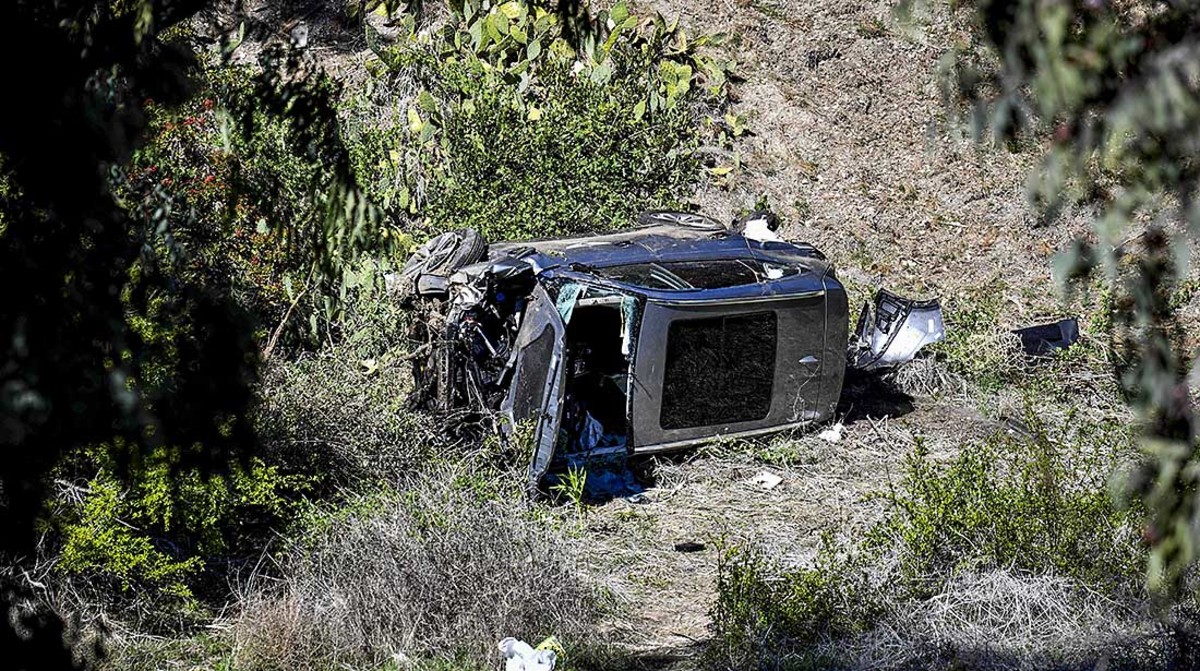
On the morning of Feb. 23, Woods was on his way to the second day of shooting for a documentary series, as part of an endorsement deal with Discovery/Golf Digest. On the first day, he gave golf lessons to actor David Spade, actress Jada Pinkett Smith and former NBA star Dwyane Wade.
The second day of the documentary shooting was to include former NFL quarterback Drew Brees and current L.A. Chargers quarterback Justin Hebert.
“We shot with Tiger (Monday) and he was charming, giving and full of love,’’ wrote the director of the film, Peter Berg, in an Instagram post. “He was professional and f------ awesome. Today he didn’t make it to the set and we are a heartbroken crew.’’
Something had gone terribly wrong as Woods traversed a winding road on his way to Rolling Hills just after 7 a.m., according to a 22-page report released by the Los Angeles County Sherriff’s Department some six weeks after the accident.
The cause of the crash was listed as “driving at a speed unsafe for the road conditions and the inability to negotiate the curve of the roadway.’’ According to the report, Woods was traveling at more than 82 mph in a 45-mph zone in the Genesis GV80 SUV provided to him by the tournament. It was unclear whether he attempted to negotiate the curve. According to police, the vehicle was traveling approximately 75 mph at when it left the road.
As the hilly portion of Hawthorne Road curved right, Woods went straight as the vehicle plowed through a median, struck a curb and knocked down a wooden sign that read “Rolling Hills Estates,” in Palos Verdes, south of downtown Los Angeles. The SUV crossed over into opposite lanes of Hawthorne before it left the roadway, crashed into a tree and rolled over.
Woods was immediately transported to Harbor-UCLA Medical Center, the trauma center located closest to the accident site. Three days later, he was transferred to Cedars-Sinai Medical Center in Los Angeles where he stayed for a few weeks until returning to his South Florida home.
He suffered multiple open fractures in the tibia and fibula of his right leg and there were multiple significant injuries to his right foot and ankle.
He underwent multiple surgeries and a rod was inserted into the tibia to stabilize the fractures, with screws and pins inserted into his foot and ankle. There was also trauma to the muscle and soft tissue of the leg, requiring surgery to relieve pressure due to swelling.
“It’s altered,’’ Woods said last week when asked about the condition of his leg. “My right leg does not look like my left, put it that way.’’
Among some of the findings in the report, Woods mistakenly believed he was in Florida when he was interviewed at Harbor-UCLA Medical Center following the crash.
An empty bottle, like the kind found at a pharmacy, was found in a backpack at the scene with no label or indication of what might have been inside it. Woods’ blood pressure was “too low to administer any type of pain medication’’ shortly after the crash, likely due to shock.
Woods was not issued a citation because there were no independent witnesses and no officers who observed the collision sequence, according to Sheriff Alex Villanueva. The sheriff also said his department did not try to examine Woods’ blood for evidence of medication because there was not strong enough reason for it.
“People said, “Oh, they should have drawn blood or done this or done that,’’ Villanueva said. “Without the signs of impairment, we don’t get to the point where we can actually author a search warrant and determine the probable cause to get that and execute that search warrant, so that did not happen. And this is not preferential treatment. That would occur in any collision of this type.’’
The police report also stated that during the time Woods was behind the wheel, he did not apply the vehicle's brakes or attempt to do anything to slow the car down before it crashed.
The report was issued on the eve of the 2021 Masters, where Woods’ absence was notable. Two years earlier, he captured an unlikely fifth Masters victory and 15th major title. At the 2020 Masters, played in November due to its postponement in the wake of the coronavirus pandemic, Woods was well out of contention, having made a 10 at the par-3 12th hole (his highest score ever at Augusta National) before responding to birdie five of the last six holes – just one more example of his career-long resilience.
Those remain the last official, competitive holes of golf Woods has played.
In a statement released the day of the police findings, Woods said he was “so grateful to both of the good Samaritans who came to assist me and called 911" following the crash.
A few weeks later, Woods posted a photo of himself in his backyard, on crutches, wearing a cast and a boot. For months afterward, there were no public updates on his health.
In the days after the accident, golf understandably was not on anyone’s mind. Woods and his condition were at the forefront of any conversation about the game. He is, after all, one of the most famous athletes of his generation, and concern focused on his well-being.
The horrific photos of his smashed car and the release of the final police report made clear how lucky Woods was to survive. His ability to resume normal activity and achieve quality of life goals were profoundly far more important than a professional golf career.
Two days before the crash, Southern California native Max Homa won the Genesis Invitational in a playoff over Tony Finau. There to present him the trophy was Woods. Winning a tournament was big enough. Having Tiger hand you the trophy and pose for photos was on another level, the stuff of dreams. Like many of his generation, Homa revered Woods.
“Not to seem like super corny, but I think golf is probably the only sport I could think of where you end up competing against your idols and heroes,’’ Homa said. “I was six years old when I first heard Tiger Woods and… I’m still playing against him, I’m still around him. I think that’s rare.’’
The glow of victory at an iconic venue and his interaction with Woods still enveloping him, Homa traveled cross-country to the next event in Florida, the WGC Workday Championship, and on Tuesday while players were practicing or arriving at The Concession Golf Club in Bradenton, Homa’s phone blew up.
Like others, he was learning of the news that occurred three time zones away.
“It was eerie,’’ Homa said. “It was the exact same feeling I felt like with the Kobe Bryant news, which was about a year prior which was just super bizarre. This one was definitely closer to home, but it's just like . . . not to get too deep . . . but just the mortality of your entertainment heroes, I guess.
“Everyone grew up at least watching a show or something, where playing for me is sports and you just think that person's just always going to be there, there's just no thought of why they wouldn't be. Maybe they won't be playing anymore, but they'll be there.
“When that went away with the Kobe thing, it was super bizarre. And Tiger, like I said, is much closer to home. It was very weird. I mean, obviously isn't about me, but I was thinking about the fact that that was the first time we like hung out kind of, like I had the coolest moment of my life and he was a part of it and then the next day I thought he might not be here anymore.
“That was just a weird concept to wrap my mind around. Again, it's the least important part of it, but that's just where my head went. It was very eerie.’’
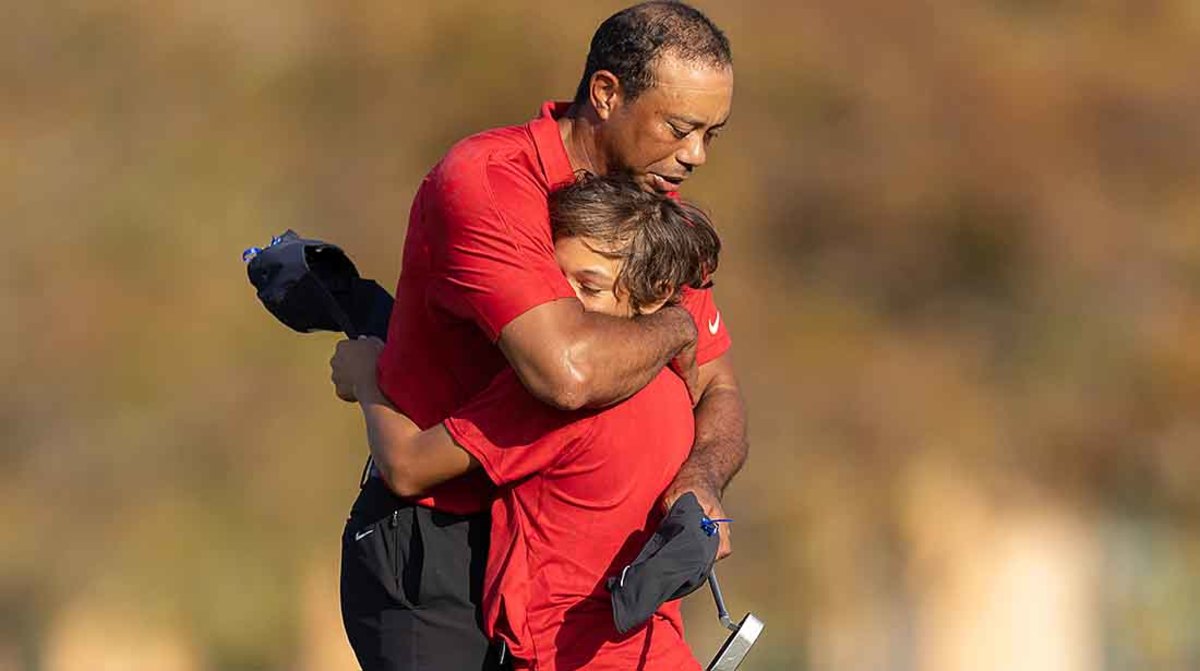
Many wondered why Woods was driving at all, why he didn’t hire someone to do the task, why someone didn’t pick him up, why one of his friends or his agent or any number of people wasn’t behind the wheel that morning.
As famous as he is, Woods often drove himself, whether it was at home, or to a tournament site with his caddie sitting in the passenger seat. This was his habit, and it certainly was striking to see a person of his stature and fame driving, alone, to a public venue or golf course.
The memory of such seemingly routine matters was vivid as news of the crash circulated and details emerged. Something unique about Tiger – a celebrity who didn’t want a driver – seemed sad. Perhaps events would have played out differently if someone else had the responsibility of getting Woods from place to place.
Company officials at Discovery found themselves under scrutiny and were questioned about it. But you can be sure if such a service had been offered, Tiger would have declined. That is how he operated.
Woods went mostly quiet after he returned home in March. There was the photo he posted shortly after the Masters of him on crutches with his dog. Another photo surfaced of him attending his son Charlie’s junior tournament in the fall.
The golf Twitter world was on full alert when Woods posted a three-second video in late November taking one swing at a ball on a driving range while wearing a compression sock on the bottom part of his right leg.
His first public comments came a few weeks later at the Hero World Challenge, another tournament he hosts.
Because of the significant injuries to his right leg and foot, Woods said it was “50-50’’ as to whether or not part of his leg might be amputated. “I’m lucky to be alive and also have a limb,’’ Woods said, making it clear that a return was not imminent.
In addition to his three-week hospital stay, Woods said he was in a hospital-like bed at home for three months.
“This one’s been much more difficult,’’ Woods said, referencing the various injury comebacks in his career. “The knee stuff was one thing. That’s one level. Then the back. With this right leg… it’s hard to explain how difficult it is. Being immobile for three months. Just to lay there. I was just looking forward to getting outside. That was a goal of mine. Especially for a person who lived his entire life outside, that was a goal.
“I transitioned from a wheelchair to crutches and now nothing. It’s been a lot of hard work.’’ But he also admitted, “there’s a long way to go.’’
Some of the physical difficulties were evident as Woods played in the PNC Championship, a 36-hole tournament in December with his son, Charlie, as his partner. The duo finished second to John Daly and John II and at one point, the Woodses put on quite the birdie display during the final round. But Tiger was using a cart and it was obvious at times that the struggle to walk was real. The idea of doing it in the context of 72-hole tournament play appeared daunting.
As sound as Woods’ swing looked, and as much hope as it gave to a comeback, it was clear would not be back anytime soon.
“I can still play, but I'm in a cart,’’ Woods said at Riviera. “Being a weekend warrior is easy, that's not that hard. Hit your ball, hop in a cart, ride, barely step out of the cart, grab your club and hit the next one. And the longest walk you have is probably from, what, the cart to the green and back.
“I can do that, that's not that hard, but walking a golf course, that's a totally different deal. Then walking out here for days on end, long days. Don't forget when my back was bad, when we had rain delays and had to reactivate everything and go back out there again. I've still got that issue, too. I've got a long way to go. Did it give me hope? Yes, it did because I went through a very difficult year last year.’’
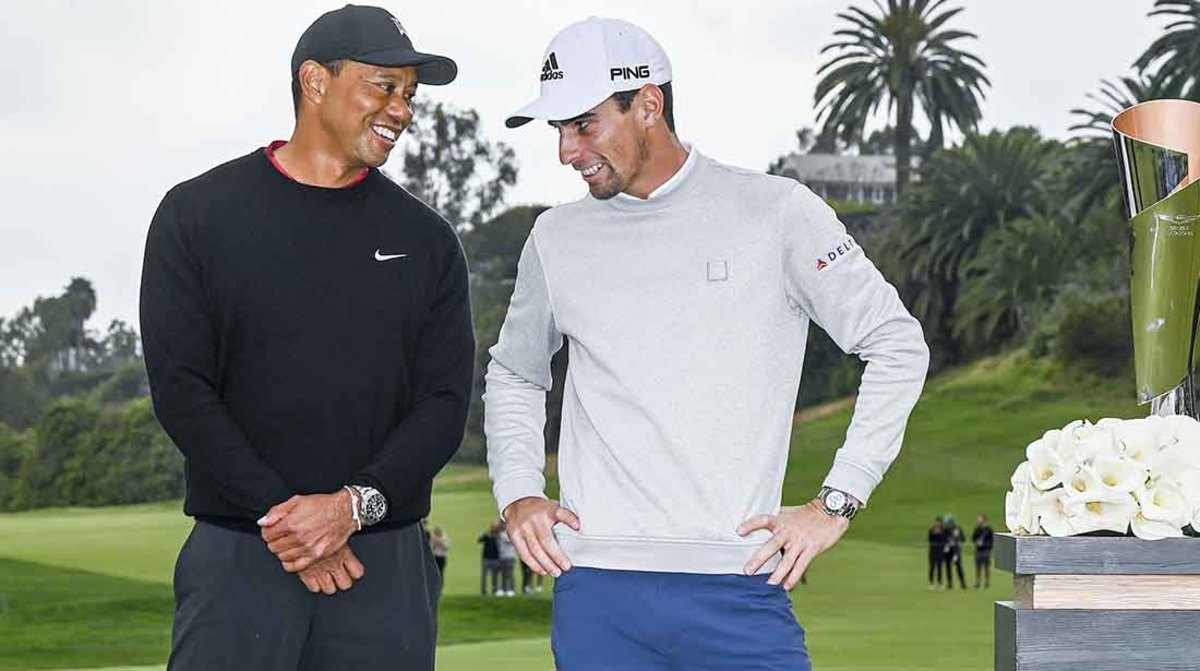
As is his wont, Woods would not disclose a timetable. Nantz tried to get Woods to say on CBS last Saturday if he would play in the Par 3 Contest on the eve of the Masters (1,060 nine-hole course) and Woods did his best to shut down such an idea. He would not commit to any tournament goals, but that does not stop the rest of us from speculating.
The Masters and its steep, undulating Augusta hills would seem highly unlikely. Woods will likely attend the Champions Dinner that will be hosted by Hideki Matsuyama. Perhaps he will stick around for the Par 3 Contest, although that is not really his style.
Then where? Southern Hills for the PGA? The Country Club for the U.S. Open? Maybe those courses are more forgiving, but they are still difficult major championship venues. Will he really be able to take on the rigors of such activity while getting his game in shape for a major championship?
The Old Course at St Andrews has been a popular pick for a return, and it is relatively flat and not particularly difficult. Nobody would care if Woods shot 90, so happy would they be to see him in Scotland and waving from the Swilcan Bridge.
For now, that would appear to be the earliest for a return, and if not there, we are looking probably at his Hero event in the Bahamas.
“You’ll see me on the PGA Tour,’’ Woods said. “I just don’t know when.’’
That Woods is even suggesting that he believes he’ll be playing again -- a year removed from the crash -- speaks to his remarkable recovery and resiliency. Whether he ever plays golf at a high level will be discussed and debated at length before a tee goes in the ground at his first event back.
For now, it’s more about reflecting on where he was and what he’s endured to reach this point.
“I'm very lucky, very lucky,’’ Woods said. “As a lot of you guys know, I didn't know if I was going to have the right leg or not. So, to be able to have my right leg still here, it's huge. I still have a lot of issues with it, but it's mine and I'm very thankful for that.
“Thankful for all the surgeons and doctors and nurses that, for all the countless surgeries that we went through and countless rehabs and the (physical therapy) sessions are brutal, but it's still mine and I'm very thankful for that.’’
